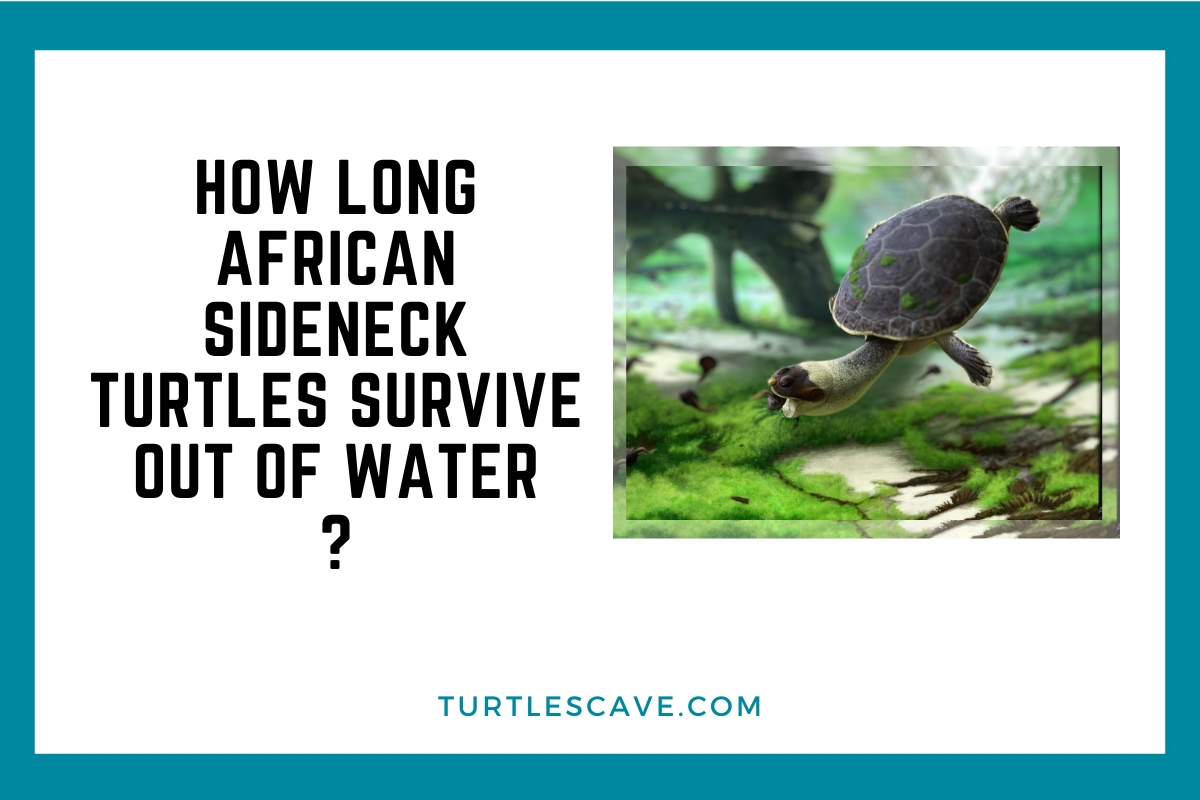African sideneck turtles can be out of water for up to 24 hours. These turtles are semi-aquatic and require both land and water to thrive.
African sideneck turtles, also known as african mud turtles, are native to the freshwaters of eastern and southern africa. They are popular pets, known for their distinctive long necks and beautiful colors. However, pet owners often wonder how long they can leave their turtles out of the water.
As semi-aquatic animals, african sideneck turtles require both land and water to live comfortably. They spend most of their time in the water, but also need to come up on land to bask in the sun and dry their shells. In this article, we will discuss how long african sideneck turtles can be out of the water, the best conditions for them to live in, and how to properly care for them as pets.
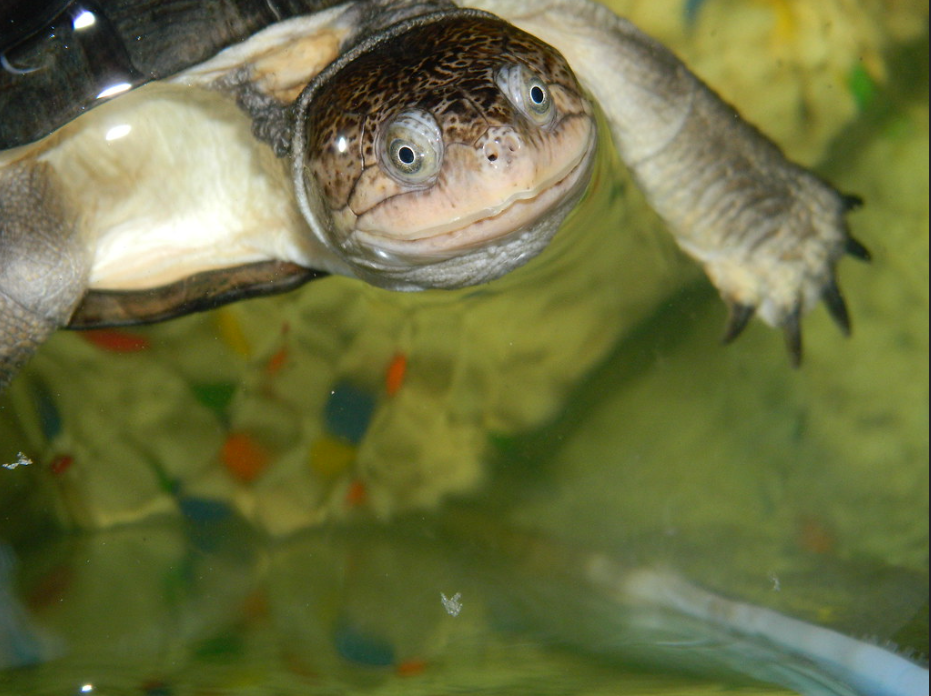
Credit: Worst Pies in London
Anatomy And Physiology Of African Sideneck Turtles
African sideneck turtles are fascinating aquatic pets popular for their unique appearance, docile nature, and low maintenance. These turtles are known for basking in the sun for hours, but pet owners often wonder how long they can stay out of the water.
In this blog post, we will explore the anatomy and physiology of african sideneck turtles to understand their shell structure, respiratory system, and digestive system, specifically focusing on answer to the question: how long can african sideneck turtles be out of water?
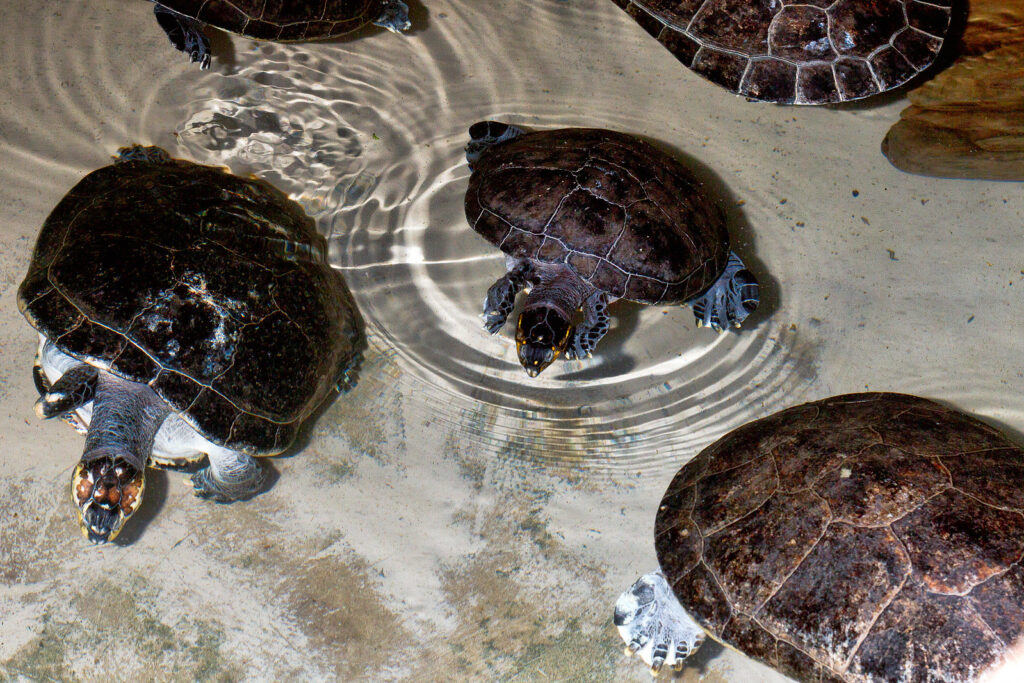
credit: Nick Michalski
Understanding The Shell Structure Of African Sideneck Turtles
African sideneck turtles have a unique shell structure that acts as a protective shield for their internal organs. The shell comprises two main components, the carapace (upper shell) and the plastron (lower shell). Both these shells are fused together and are made up of bones, covered by scutes that are similar to fingernails.
However, unlike other turtles, african sideneck turtles have a hinged plastron that allows them to retract their head and legs within the shell when threatened. This unique structure gives them a distinct advantage for defense against predators and also allows them to live comfortably on land as well as in water.
The Unique Respiratory System Of Sideneck Turtles And Its Importance
African sideneck turtles have a specialized respiratory system that allows them to stay underwater for extended periods of time. These turtles have lungs that are modified to extract more oxygen from the air, enabling them to stay submerged for up to 30 minutes without the need to come to the surface for air.
Additionally, their cloaca, a common opening for excretion and reproduction, is also involved in gas exchange, which means they can breathe through their backside when in water. This efficient respiratory system allows them to survive comfortably both on land and water.
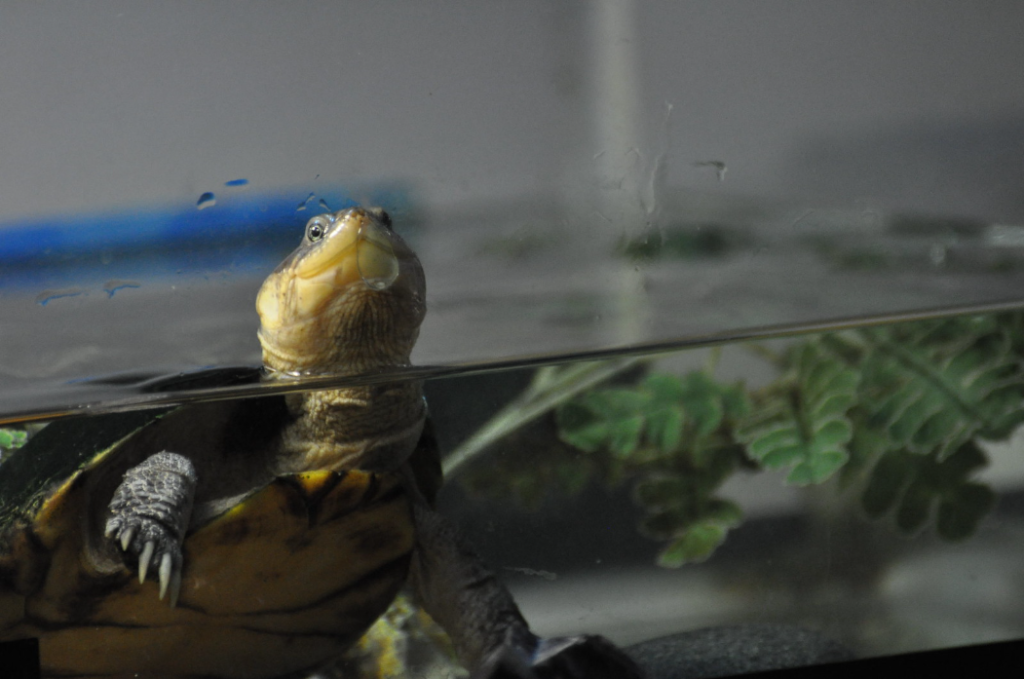
credit: Beth Cantrell
How The Digestive System Of Sideneck Turtles Differs From Other Turtles
The digestive system of african sideneck turtles differs from other turtles because they are primarily carnivorous. They feed on a variety of animal matter, including insects, fish, shrimp, and mollusks, among others. Unlike herbivorous turtles, they have a shorter intestinal tract that is designed to digest protein-rich diets efficiently.
Additionally, these turtles also have a unique liver adaptation that detoxifies nitrogenous waste, allowing them to stay underwater for a prolonged period.
However, it’s essential to understand that even though african sideneck turtles can stay out of water for some time, they are primarily aquatic animals and can experience stress and discomfort if kept out of the water for more than a few hours.
As a responsible pet owner, you must provide your african sideneck turtle with the proper environment, including enough water to enable them to swim comfortably and bask in the sun for a reasonable amount of time.
African sideneck turtles are adaptable animals with unique anatomy and physiology that allows them to survive both on land and in water. While they can stay out of water for some time, they should not be deprived of aquatic environments for extended periods.
As a pet owner, it’s essential to provide a suitable environment to ensure their health and well-being.
The Natural Habitat Of African Sideneck Turtles
African sideneck turtles are semi-aquatic reptiles that are native to africa. These turtles are known for their unique necks, which they can use to protect themselves from predators. African sideneck turtles are found in a wide range of habitats, including streams, rivers, lakes, and swamps.
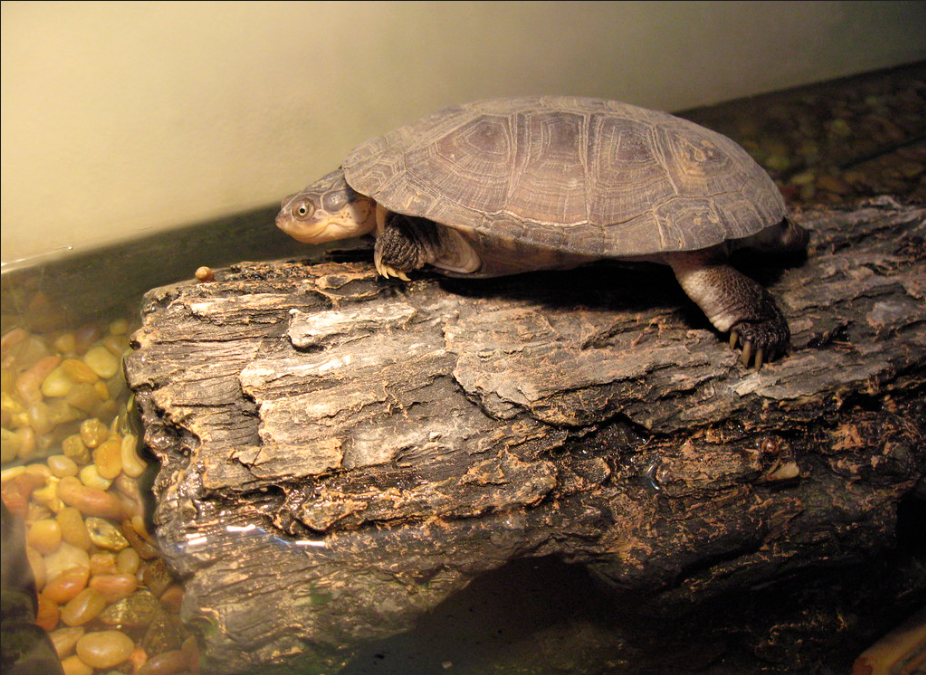
credit: Stephanie Tichenor
Where Can African Sideneck Turtles Be Found In The Wilderness?
African sideneck turtles can be primarily found in the wilderness of africa. Some of the specific locations where these turtles can be found include:
- The nile river
- The congo river
- Lake tanganyika
- Lake victoria
How Do African Sideneck Turtles Adapt To Their Natural Habitat?
African sideneck turtles have several adaptations that help them survive in their natural habitat. Some of these adaptations include:
- Their unique necks that allow them to retract their head and protect themselves from predators.
- Their hard shells that provide protection and support.
- Their webbed feet that allow them to easily maneuver through water.
- Their ability to absorb oxygen directly from the water through their skin.
The Role Of Water And Land In The Natural Life Of The Sideneck Turtle
Water and land play critical roles in the natural life of african sideneck turtles. These turtles require access to both land and water to thrive. Some of the specific ways that water and land are important to the natural life of sideneck turtles include:
- Water provides sideneck turtles with a place to hunt for food and find shelter.
- Land provides sideneck turtles with a place to bask in the sun and regulate their body temperature.
- The ability to move between water and land allows sideneck turtles to access different food sources and avoid predators.
Understanding the natural habitat of african sideneck turtles is critical for understanding and appreciating their unique adaptations and behavior. By providing a mixture of both water and land, you can create the perfect environment for these fascinating reptiles to thrive in.
The Mystery Of African Sideneck Turtle Survival Out Of Water
African sideneck turtles are fascinating creatures that are found in many freshwater habitats in africa. They are known for their unique ability to survive outside their natural habitat, an adaptation that has puzzled researchers for years. In this blog post, we will delve into the mystery surrounding the sideneck turtle’s survival outside water.
How Long Can The African Sideneck Turtle Survive Out Of Water?
The african sideneck turtle can survive out of water for an extended period of time, up to several days, and in some rare cases, even weeks. Here are some factors that influence their survival time.
- The age and health of the turtle – younger and healthier turtles have a better chance of surviving outside water for longer periods than older or sick turtles.
- The temperature and humidity of the environment – these turtles require a humid environment to survive. If the environment is too dry, they may dry out and die.
- The availability of food and water – these turtles can survive longer if they have access to food and water outside of their natural habitat.
Factors That Influence The Survival Time Of Sideneck Turtles Outside Water
As with most animals, there are several factors that affect the survival time of sideneck turtles outside water.
- Species of turtle – different species of turtles have different abilities to survive outside water.
- Time of year – during the hot summer months, turtles are more likely to survive outside water for longer periods than in colder weather.
- Clutch of turtle – turtles that are carrying eggs are less likely to survive outside water for extended periods since they require more moisture to keep the eggs from drying out.
- Aquatic environment – turtles that have been living in an aquatic environment with a high level of moisture are more likely to survive longer outside water than those living in a drier environment.
Why Is This Phenomenon Of Heightened Survival Important?
The ability of the african sideneck turtle to survive outside their natural habitat for an extended period has raised the interest of researchers. Some of the key reasons for exploring this phenomenon include:
- Learning more about how turtles have adapted to their environment over time.
- Understanding how different factors, such as temperature and humidity, affect their survival outside water.
- Discovering how turtles manage to survive, even without the presence of water for weeks at times can help researchers develop conservation strategies for these turtles.
African sideneck turtles have evolved to survive outside water for an extended period. Understanding the factors that affect their survival can help researchers develop better conservation strategies and better protect these fascinating creatures.
The Techniques For Monitoring African Sideneck Turtle Health
Assessing The Physical Attributes Of African Sideneck Turtles For Health
African sideneck turtles require healthy living conditions to thrive and live up to their full potential. Monitoring their physical attributes can help pet owners understand their turtle’s health status. Here are several key physical attributes to assess when examining your pet turtle’s health:
- Shell condition: A turtle’s shell should be smooth and firm. Inspect the shell for any signs of cracks, chipping, or softness.
- Eyes: The eyes should be clear, alert, and free from redness, swelling or discharge.
- Mouth: Check the turtle’s mouth for signs of infection or inflammation. Look for any white spots or masses in the mouth since it could be indicative of bacterial or fungal infection.
- Skin: A turtle’s skin should be uniform in color, free of any lumps, or bumps and should be free from cuts or bruises.
Monitoring The Behavioral Characteristics Of African Sideneck Turtles
It’s essential to keep a watchful eye on your turtle’s behavior patterns. Any changes can be indicative of an underlying health problem. Here are some tips on monitoring your turtle’s behavior:
- Swimming ability: A healthy turtle should be able to swim efficiently. Look for any signs of limping or slowness.
- Appetite: African sideneck turtles have a reputation for being voracious eaters. Keep track of their eating habits and note any sudden changes to their appetite.
- Reclusiveness: Turtles are social creatures and enjoy basking under the sun. If your pet turtle suddenly becomes aloof or reclusive, it could be a sign of an underlying issue.
- Activity level: Observe your turtle’s activity level. Significantly less active behavior can be an indicator of poor health.
Understanding The Important Role Of Diet In Sideneck Turtle Survival
African sideneck turtles require a balanced diet to stay healthy and robust. A lousy diet can lead to health complications, making it essential to monitor your turtle’s eating habits regularly. Here are some essential diet tips to keep in mind:
- Variety: Provide your turtle with varied food options that include crickets, fish, fruits, and vegetables.
- Calcium supplement: Add a calcium supplement to your turtle’s food, ensuring they maintain a healthy shell.
- Portion control: Feed your turtle small portions several times a day instead of one large meal to avoid digestive problems.
- Fresh water: Ensure your turtle has a clean and freshwater source to drink. Poor water quality can lead to several health problems.
Regularly monitoring african sideneck turtle’s health is crucial for their long-term survival. By keeping an eye out for changes in their physical characteristics, behavior, and dietary habits, owners can take the necessary steps to ensure their pets remain healthy and happy.
The Care And Conservation Of African Sideneck Turtles
How Long Can African Sideneck Turtles Be Out Of Water
African sideneck turtles, also known as african mud turtles or pelusios castaneus, are fascinating creatures native to sub-saharan africa. They are amphibious, which means they can live both in water and on land, giving them a unique appearance and behavior.
While these turtles are excellent swimmers, they need to breathe air like any other reptile. The amount of time an african sideneck turtle can spend out of water depends on several factors, such as humidity, temperature, and age. As a general rule, adult turtles can survive without water for up to 1-2 days, while younger turtles may only last a few hours.
African sideneck turtles make great pets, but they also play a critical role in maintaining biodiversity. Here are some key points to keep in mind when it comes to the care and conservation of african sideneck turtles.
How To Care For African Sideneck Turtles As Pets
If you are planning to have an african sideneck turtle as a pet, you should ensure that you provide them with adequate care to thrive. Here are some tips to keep your pet turtle healthy and happy:
- African sideneck turtles need a suitable habitat that mimics their natural environment. A large aquarium with a basking area, a heat lamp, and a uv light is ideal.
- Keep the water clean by changing it weekly and using a good water filter.
- Provide a varied diet that includes both animal and plant matter, such as commercial turtle pellets, live or frozen fish, insects, and leafy greens.
- Handle your turtle gently and minimally to avoid stress and injuries.
- Regularly take your turtle to the vet for checkups and treatments.
The Role Of African Sideneck Turtle Conservation In Maintaining Biodiversity
African sideneck turtles are part of the african ecosystem, and their existence is crucial for the balance of the food chain and the preservation of natural habitats. Unfortunately, these turtles face many threats, such as habitat destruction, pollution, and poaching.
Conservation efforts such as habitat restoration, anti-poaching programs, and public education can help protect these turtles and their environment.
African Sideneck Turtle Breeding Programs And Why They Matter
Breeding programs are essential for the survival of many endangered species, including african sideneck turtles. These programs involve breeding turtles in captivity and reintroducing them into the wild to increase their numbers and genetic diversity.
Breeding programs also allow scientists to study the biology and behavior of these turtles, which can lead to better conservation strategies.
African sideneck turtles are fascinating creatures that require adequate care and protection to thrive. By understanding their needs and role in the ecosystem, we can help ensure their survival and the preservation of their environment for generations to come.
Frequently Asked Questions For How Long Can African Sideneck Turtles Be Out Of Water
How Long Can African Sideneck Turtles Stay Out Of Water?
African sideneck turtles can remain out of water for several hours, but it is not recommended to keep them out of water for long periods as they require aquatic environments for their survival.
Do African Sideneck Turtles Need Water To Survive?
Yes. African sideneck turtles need water to survive, as they are an aquatic species of turtle. They require water to drink, swim, regulate their body temperature, and to breathe through their skin.
How Often Should You Let Your African Sideneck Turtle Out Of Water?
It is recommended to let your african sideneck turtle out of water for about an hour or two each day. This will provide them with an opportunity to bask, explore their surroundings and to stretch their legs.
Can African Sideneck Turtles Drown?
Yes. African sideneck turtles can drown if they are unable to surface for air. It is important to ensure that they have access to the water surface and that their enclosure has a shallow area where they can rest and breathe.
How Do You Know If African Sideneck Turtles Need To Go Back In The Water?
You can tell if african sideneck turtles need to go back in the water by observing their behavior. If they begin to look lethargic, stop moving and start to shut their eyes, it is time to place them back into the water.
Conclusion
As we have learned, african sideneck turtles are fascinating creatures that require certain conditions to thrive. Understanding their behaviors and needs ensures that they have a long and healthy life. When it comes to being out of water, they can only tolerate a limited amount of time depending on the age and temperature.
By taking steps to protect their natural habitats, we ensure that they will exist for many generations to come. It is our responsibility to provide the best care possible for our african sideneck turtles and do our part to ensure that they continue to thrive in their natural environments.
Recent Posts
Turtles headbutt black things due to their instinctual response to threats or territorial disputes. When turtles encounter black objects, they may perceive them as intruders or competitors, leading...
To fix a hole in a turtle shell, clean the wound thoroughly and apply adhesive or a patch specifically designed for shell repairs. Then monitor the turtle for any signs of infection or further...

